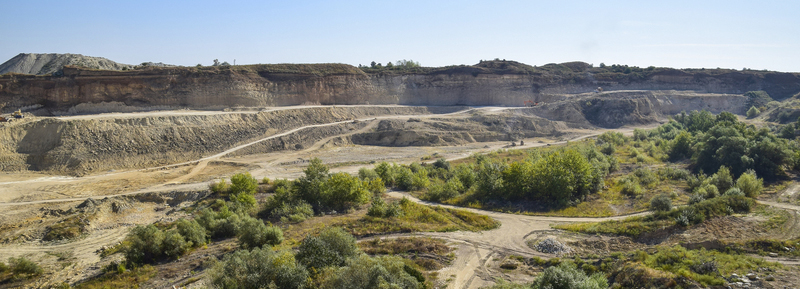Past
NRD Cases Highlight
Vulnerability of Future
Claims
The New
Jersey Department of Environmental Protection (“NJDEP”) filed three lawsuits
seeking Natural Resource Damages (“NRD”) in August 2018. In these
lawsuits, which are NJDEP’s first in eight years, NJDEP is seeking damages for
injury to groundwater, sediments, surface water, wetlands and biota.
Given the amount of time that has passed since the last NRD case was filed by
the State, a review of where we left off may be helpful to understand the
hurdles NJDEP will continue to face with respect to NRD and the defenses that
potentially responsible parties may assert when presented with an NRD claim.
As an
initial matter, an NRD claim can consist of both restoration and compensatory
damages. Restoration costs are those incurred to restore, rehabilitate, or
replace a damaged resource. Compensatory damages include the value of the
services lost during the time it takes to restore or replace the damaged
resource. With respect to any NRD claim, restoration and compensatory
damages must be reasonably calculated. At the federal level, there are
regulations setting forth an assessment process for calculating NRD; but NJDEP
never has promulgated similar rules, although encouraged to do so by New Jersey
courts. In the past, the lack of regulations to calculate NRD has
impaired NJDEP’s ability to recover NRD and may continue to do so into the
future.
Although
NJDEP has not adopted regulations to calculate NRD, with respect to its earlier
NRD claims, NJDEP did develop a formula to calculate damages for injury to groundwater.
The formula was used primarily as a basis for settlement discussions with
potentially responsible parties. In NJDEP v. Exxon,
Mer-L-2933-02 (Law Div. Aug. 24, 2007), when NJDEP attempted to use the formula
in litigation, the court rejected it. The court held that because NJDEP
did not adopt rules setting forth how to calculate NRD, it was required to
prove each element of any calculation used to determine its damages.
After reviewing NJDEP’s groundwater formula, the court found that
the formula did not support NJDEP’s claimed damages. This case, however,
did not prompt NJDEP to promulgate NRD rules and, as such, NJDEP will continue
to face challenges on each aspect of its NRD calculation.
In two
subsequent cases, NJDEP attempted to recover restoration costs from potentially
responsible parties that were remediating the sites at issue. In NJDEP
v. Essex, 2012 WL 913042 (N.J. Sup. Ct., App. Div., March 20, 2012),
and NJDEP v. Union Carbide Corp., Mid-L-5632-07 (N.J. Sup. Ct., Law
Div., March 29, 2011), NJDEP was seeking to have the potentially responsible
parties conduct additional remedial work at a substantial cost to the parties
in order to expedite the remediation. The courts in both cases found that
NJDEP could not justify the additional costs because the parties already were
cleaning up the sites. The courts stated that in order for NJDEP to
recover NRD in these cases it must demonstrate that there is a threat to human
health, flora or fauna that is not being addressed by the remediation.
NJDEP could not meet this burden in either case. The holdings in Essex and Union
Carbide provide potential arguments to combat NRD restoration claims
at sites that are being remediated.
Conversely,
the court in NJDEP v. Amerada Hess Corp., 323 F.R.D. 213 (D.N.J.
2017), allowed NJDEP to recover NRD at a site that was being remediated. The
court distinguished Essex and Union Carbide by explaining that
the remediation in Essex and Union Carbide would reduce the
contaminants of concern to their practical quantitation level, which would
result in the contamination being at its lowest quantifiable limit, essentially
restoring the site to pre-discharge conditions. In Amerada Hess,
however, the court found that the remediation would not reduce the
contamination to the lowest measurable level, and therefore, NJDEP could
require additional remediation to address NRD. As evidenced by the Amerada
Hess case, the contaminant of concern at the site and the limits reached
by the remediation may drive whether NJDEP can recover NRD for restoration.
NJDEP also
has faced difficulties when seeking compensatory damages In fact,
in Essex, NJDEP wanted Essex to purchase and preserve land to
compensate for the damaged groundwater at the Essex site. The court found
that requiring Essex to purchase this land would result in a windfall to NJDEP
because its preservation would protect not only groundwater, the damaged
resource, but also flora and fauna found on the newly acquired property.
Further, in other cases involving compensatory damage claims, NJDEP was unable
to support its damages with expert testimony. Given that there are no
regulations on how to calculate compensatory damages, which is difficult to do,
potentially responsible parties may be able to defeat claims for such damages
by providing proper challenges to the NJDEP’s compensatory approaches or
experts.
As briefly
described above, a look back at earlier cases and claims by NJDEP involving NRD
may assist potentially responsible parties in formulating defenses to new NRD
claims. Until NJDEP promulgates regulations regarding NRD, and possibly
even after, NRD calculations and claims will remain vulnerable to challenge.
For more information, please contact the author Laurie J. Sands at lsands@riker.com or any attorney in our Environmental Practice Group.
Lessons
From NJDEP's Recent Enforcement Actions
The State
of New Jersey ratcheted up its environmental enforcement activities earlier
this year with the filing of six lawsuits seeking to recover environmental
damages, as we previously reported in There Is A
New Sheriff In Town – State Files Six New Environmental Enforcement Cases.
While we wait for these lawsuits to move forward, one question remains:
If “there is a lesson in everything,” as a wise man once said, what lessons are
to be learned from the filing of these suits? The obvious lesson, and the
one touted by the State, is: “If you pollute [New Jersey’s] natural resources,
[the State is] going to make you pay.” However, further reflection
suggests that there are other lessons to be learned.
Lesson #1:
New Jersey Will Broadly Distribute its Remediation Resources
While we
do not know for certain how the NJDEP chose the six sites involved in its
recent lawsuits, it seems that the State made a conscious effort to select
sites that are spread across New Jersey. One of the sites is situated in
Atlantic County, two are situated in Middlesex County, two are situated in
Essex County, and one is situated in Warren County. As Attorney General
Grewal said at his press conference on the filing of the recent suits: “The
truth is that environmental pollution affects us all, North and South, rural
and urban, rich and poor.” This statement and the geographic
distribution of the enforcement actions suggest that the State intends to clean
up sites across New Jersey, and allocate its limited financial resources,
without focusing on any specific region.
Lesson #2:
New Jersey Prioritizes Sensitive Receptors
It also
seems that the State focused its enforcement efforts on sites that impact
sensitive receptors. At least four of the six new actions involve a
sensitive resource or population. One action involves a former
manufacturing facility in the Ironbound District of Newark, on which
residential homes were subsequently built; a second involves another former
manufacturing facility in the Ironbound, where a school was recently built; a
third involves the former site of a manufactured gas plant near the Beach
Thorofare waterway in Atlantic City; and a fourth involves a former petroleum
refinery located on the Arthur Kill. While the NJDEP has long focused its
publicly funded remediation efforts on the protection of receptors, these
lawsuits suggests that the State will also use the threat of future litigation
as a tool to promote remediation that protects sensitive resources and
populations. Further, given that the State plans to file additional
lawsuits, sites that impact sensitive receptors may be the next to receive a
complaint.
Lesson #3:
New Jersey May Impose Liability on an “Interim Owner”
In one of
the recent lawsuits involving a former gas station in Fords, the State seeks to
impose responsibility for historical contamination on an interim owner because
it knew or should have known of contamination when it acquired the property
and, therefore, did not qualify as an “innocent purchaser,” which is
statutorily exempt from environmental liability. As discussed in another
article, The Impending Expansion of Interim Owner Environmental
Liability, New Jersey courts previously seem to agreed that an interim
owner (i.e., an entity that purchased property after it was contaminated, did
not cause or contribute to the contamination, and has since sold the property
to a new owner) is exempt from liability for pre-existing contamination. See,
e.g., White Oak Funding, Inc. v. Winning, 341 N.J.
Super. 294, 300-01 (App. Div.), certif. denied 170 N.J. 209
(2001). In the recent lawsuit, the State does not allege that the interim
owner caused or contributed to the contamination, but it does allege that the
interim owner was unjustly enriched by the remediation of the property with
public funds during the time it owned the property. If the State is
successful in imposing liability on an interim owner because of its failure to
qualify as an innocent purchaser, this will represent a significant expansion
of liability under the New Jersey Spill Compensation and Control Act.
Conclusion
The
regulated community will continue to look for lessons in the State’s ongoing
environmental enforcement activities, and there are likely to be many lessons
in the coming months, whether as a result of the progress of the above
litigation or new lawsuits brought under Governor Phil Murphy’s aggressive
environmental enforcement policy.
For more information, please contact any attorney in our Environmental Practice Group.
NJ
Appellate Division Finds NJDEP Policy and Guidance Unenforceable
New Jersey
courts will prevent regulators from enforcing requirements through guidance
that have not been formally adopted through appropriate rulemaking. Just
recently, the Appellate Division of the New Jersey Superior Court determined
that the NJDEP wrongfully imposed penalties on a radon testing company for
failing to comply with certain agency policies and guidance that had not been
promulgated through the rulemaking process prescribed by the Administrative
Procedure Act (“APA”). NJDEP v. Radiation Data Inc., Docket No.
A-1777-17T3 (N.J. Super. Ct., App. Div. Nov. 2, 2018). This decision
follows a line of cases, starting with the New Jersey Supreme Court’s seminal
decision in Metromedia, Inc. v. Dir. Division of Taxation, 97 N.J.
313 (1984), wherein the courts set standards for when state administrative
agencies are required to engage in formal rulemaking, which includes public
notice and comment procedures, before imposing new requirements on the
regulated community.
Radon is a
colorless, odorless, radioactive gas that derives from the natural breakdown of
uranium in soils and is recognized as the second leading cause of lung cancer
in humans. Radon tests are often conducted in connection with real estate
transactions, commonly as part of the home inspection process. Radiation
Data Inc. (“RDI”), the defendant in this case, is the largest radon testing
business in the State and has processed more than one million radon tests since
its inception in 1987. The NJDEP Radon Section, which administers the
State’s radon program, requires companies that test for and mitigate radon to
be appropriately licensed and to use or employ certified measurement and
mitigation professionals. Between 2009 and 2014, the NJDEP levied several
penalties against RDI for alleged violations of the radon program’s rules.
A number
of the violations alleged against RDI were related to radon tests performed by
technicians that were “affiliated” with RDI, but were either self-employed or
worked for home inspection businesses. RDI argued that it should not be
held accountable for the actions of affiliate technicians that it does not
employ, pay or control, particularly because the NJDEP had not formally adopted
rules establishing and clarifying that the testing companies would be
vicariously liable for the actions or noncompliance of affiliates.
Additional violations alleged by NJDEP were related to RDI’s failure to comply
with an agency “Guidance Document” that set forth certain, essentially
mandatory requirements for quality assurance and control plans. Again,
RDI argued that the requirements of the guidance were not enforceable because
the Department had not engaged in formal rulemaking.
In Metromedia,
the New Jersey Supreme Court set forth several factors that guide the analysis
of whether formal rulemaking for a regulatory requirement is necessary,
including for example, whether the requirement “prescribes a legal standard or
directive that is not otherwise expressly provided by or clearly and obviously
inferable from the enabling statute.” 97 N.J. at 331. Here, in Radiation
Data, the Appellate Division found that the policies and guidance that the
NJDEP was seeking to enforce met the Metromediatest and, therefore,
agreed with RDI that the imposition of penalties was improper. The court
found that the Radon Section’s “affiliate” policy is not expressed or readily
inferable from the existing statutes or rules. With respect to the
Guidance Document, the court found that it contained mandatory language and
added regulatory requirements not found in the rules. The court “urged”
the NJDEP to engage in prospective rulemaking to clarify its requirements
consistent with the APA.
The use of
substantive guidance in regulatory practice and by the NJDEP is rampant.
The Radiation Data case demonstrates that the courts
will require state regulators to adhere to the APA and will not enforce
penalties for violations of regulatory requirements that were not appropriately
promulgated. In light of Radiation Data, and the pervasive
use of guidance in environmental programs, the regulated community should be
reminded that NJDEP guidance and internal policies may not have the force of
law, especially if they include requirements that should have been adopted
through formal rulemaking in accordance with Metromedia and
the APA.
For more information, please contact the author Jaan M. Haus at jhaus@riker.com or any attorney in our Environmental Practice Group.
New
Jersey Takes the Lead in Setting Drinking Water Standard for PFNA
The New
Jersey Department of Environmental Protection (“NJDEP”) continues to take
action on emerging contaminants, and, as of September 4th, adopted a maximum
contaminant level (“MCL”) for perflourononanoic acid (“PFNA”) in drinking
water. PFNA is not regulated at the federal level, and New Jersey is the
first state to set an enforceable standard for PFNA in drinking water.
The new MCL is 0.013 micrograms per liter, that is, 13 parts per trillion, an
extraordinarily low level. MCLs for other substances are measured in the
parts per billion, so, for example, the new MCL for PFNA is nearly one hundred
times lower than the MCL for benzene, which is one part per billion. If
water systems detect the presence of this previously unregulated chemical above
the very low new MCL, they will be required to implement new treatment—at the
steep cost of $500,000 to $1 million per million gallons of water treated per
NJDEP’s estimate—or find alternate water supplies. In addition, testing
water supplies for PFNA on a statewide basis, as compared to earlier sporadic
efforts to detect PFNA, could unearth previously unknown sources of PFNA
contamination that would have to be remediated under New Jersey’s site
remediation program.
PFNA is
one member of a class of chemicals called per- and polyflouroalkyl substances
(“PFAS”) that have been used in numerous industrial applications and in
consumer products for decades, but that have come under increasing regulatory
scrutiny in recent years. PFNA in particular was used in the manufacture
of high-performance plastics. PFAS resist natural degradation when
released into the environment and remain in the body after being consumed;
studies also have linked certain PFAS to various health risks, including
cancer. Because of these health risks and the persistence of PFNA in the
environment, earlier this year NJDEP listed PFNA as a “hazardous substance”
under its regulations promulgating the Spill Compensation and Control
Act. PFNA in groundwater now must be remediated when its concentration
exceeds 13 parts per trillion as a consequence of the hazardous substance
listing.
Under
NJDEP’s new MCL rule, water systems will need to start testing for PFNA as soon
as the first quarter of 2019. Smaller water systems must test for PFNA
first. The PFNA testing requirement is triggered in 2019 for public water
systems that use groundwater as their source and that serve less than 10,000
people, as well as water systems that do not serve the general public in their
homes, such as a water system supplying a commercial building. For water
systems using surface water or larger water systems using groundwater, the
requirement is not triggered until 2020.
Because
PFNA was not listed as a hazardous substance until this year, parties
remediating contaminated sites typically have not investigated for PFNA.
Parties responsible for PFNA found in drinking water will be exposed to claims
not only for the costs of treating drinking water found to be contaminated, but
also will be required to remediate the source of PFNA contamination, whether
that source is a site already subject to remediation for other hazardous
substances or a site that heretofore was not known to be contaminated.
NJDEP optimistically predicted that the new PFNA testing regime would not disclose
water systems impacted by PFNA beyond the thirteen water systems now known to
be impacted based on earlier, piecemeal testing efforts. Several
commenters on the proposed rule doubted NJDEP’s assessment before the MCL was
adopted and predicted that currently unknown contamination will be discovered.
The
immediate consequence of New Jersey’s first-in-the-nation MCL for PFNA is to
impose new testing requirements and, potentially, costly treatment obligations
on water systems. In the long term, testing drinking water for PFNA may
uncover contamination that has long remained hidden. NJDEP also can be
expected to establish MCLs for other PFAS compounds in the future if current
trends continue.
For more information, please contact the author Michael S. Kettler at mkettler@riker.com or any attorney in our Environmental Practice Group.
Regulatory
Update
Governor
Murphy Joins Wind and Solar Energy Coalition
Governor
Phil Murphy is now the newest member of the Governors’ Wind & Solar Energy
Coalition (the “Coalition”), which is a bipartisan group of the nation’s
governors who are dedicated to the development of wind and solar energy
resources. Montana Governor and Chairman of the Coalition, Steve Bullock,
praised Governor Murphy upon his entrance into the Coalition: “It’s an honor to
have Governor Murphy as a Coalition member. Governor Murphy already has an
extraordinary record of accomplishment. Within weeks of taking office, he took
action to develop New Jersey’s vast offshore wind energy resources — steps that
will provide decades of economic development and emissions free energy to the
Garden State.” Governor Bullock’s remarks acknowledge that Governor Murphy has
pledged to achieve 3,300MW of offshore wind generation by 2030. The expansion
of the off-shore wind sector is expected to create thousands of jobs,
generating hundreds of millions of dollars in wages in areas such as research
and development, manufacturing, engineering and marine construction.
For more
information please visit www.nj.gov.
New Jersey
May Soon Provide New Tax Credits and Loans for Brownfields Redevelopment
To
accomplish his vision for a stronger and fairer economy in New Jersey, Governor
Phil Murphy released a report in October 2018 introducing a newly proposed
economic plan. Among other things, the plan calls for a reimagining of New
Jersey’s Brownfields Program, which has provided grants and loans for the
remediation and redevelopment of the brownfields within the state. The newly
proposed Brownfields Program is expected to include tax credits and loans
available through the New Jersey Economic Development Authority, and is intended
to be a more robust investment program, paying particular attention to a more
timely remediation of the contaminated sites involved. The plan also relies on
the Federal Opportunity Zone Program to attract private investment into
distressed neighborhoods, which often include brownfields, through preferential
tax treatment for investors. Implementation of Governor Murphy’s plan will
require legislative action.
For more
information, please visit www.nj.gov.
New Jersey Legislative Update
Recently Enacted Environmental Laws
P.L. 2018, c.137: (S2921) Corrects project list in P.L2018., C.85, which appropriates funds to NJDEP for environmental infrastructure projects.
Recently Introduced Environmental Bills
A4417/S3013: Revises 2050 limit on statewide greenhouse gas emissions. Status: Introduced; Referred to Assembly Environment and Solid Waste Committee. Reported out of Assembly Committee, passed second reading.
S2476/A494: Amends law to limit NJDEP’s direct oversight of remediation of portion of contaminated site under certain circumstances. Status: Introduced to Senate Environment and Energy Committee. Reported from Senate Budget and Appropriations Committee with Amendments, second reading.










